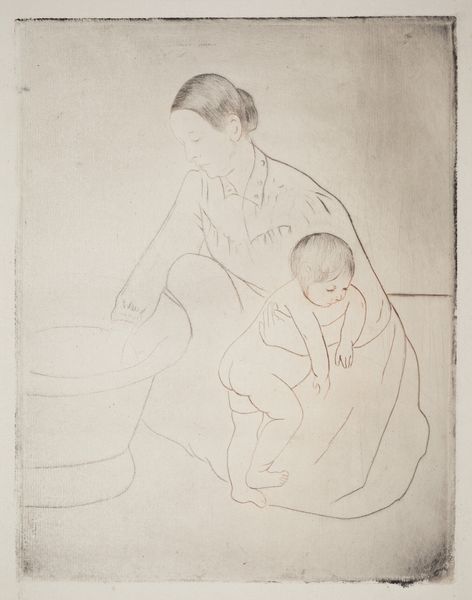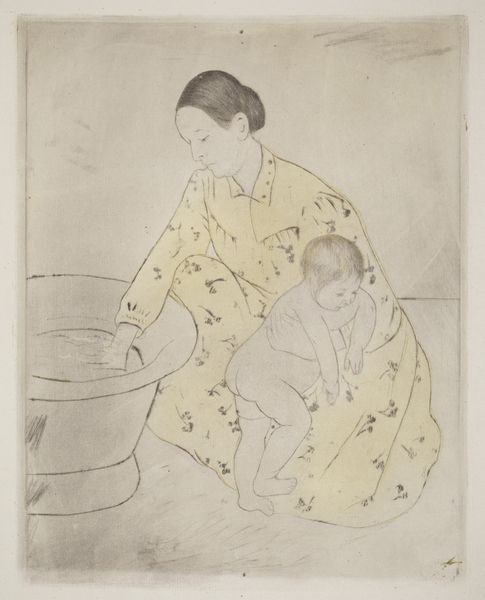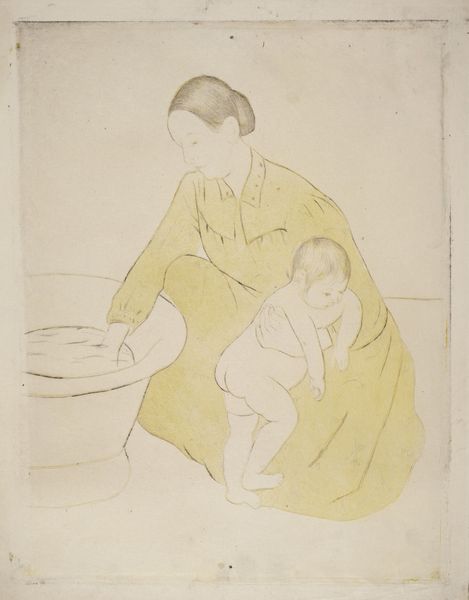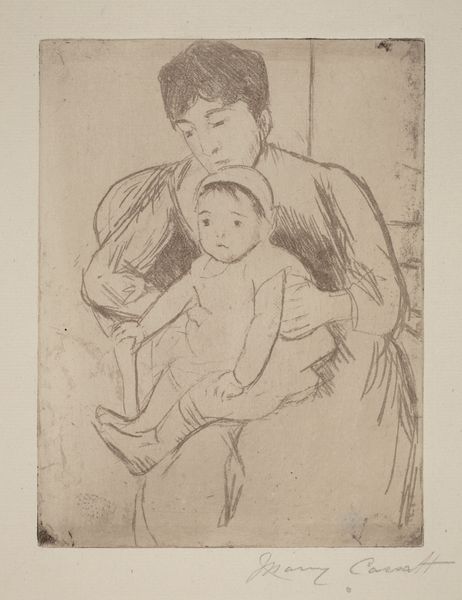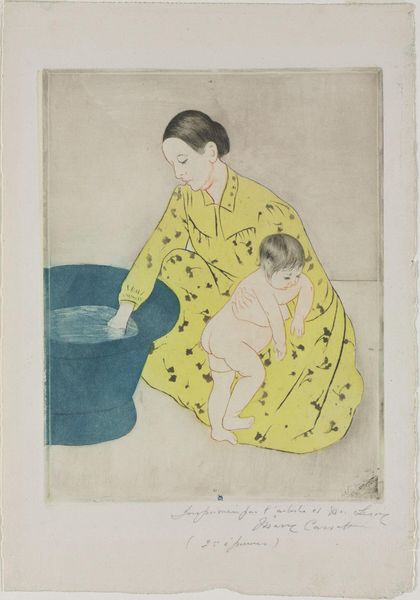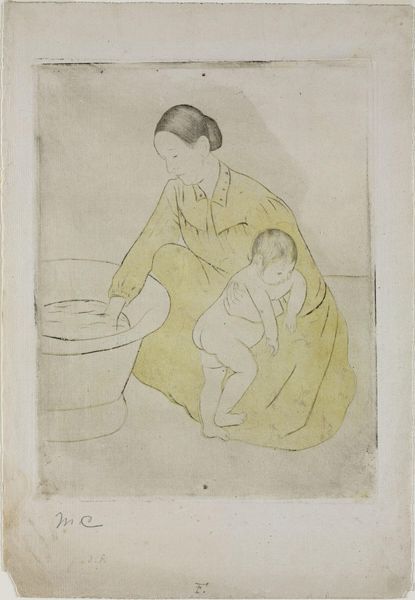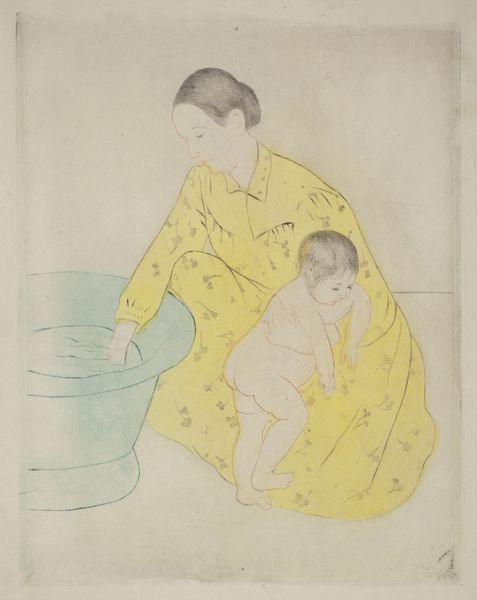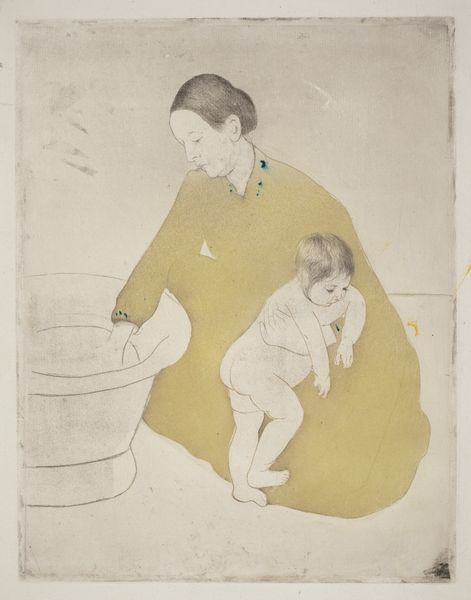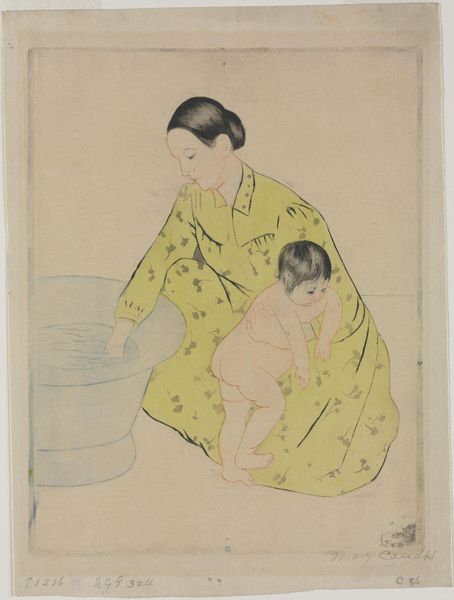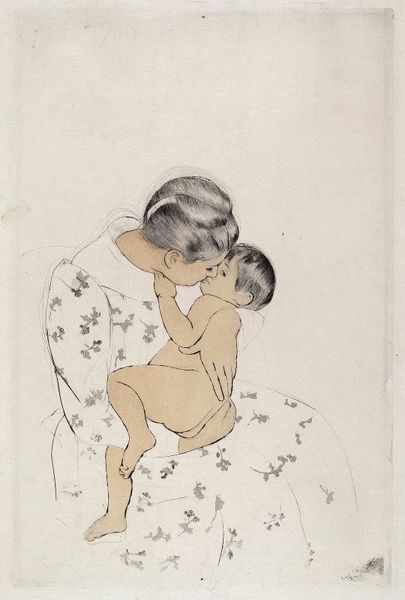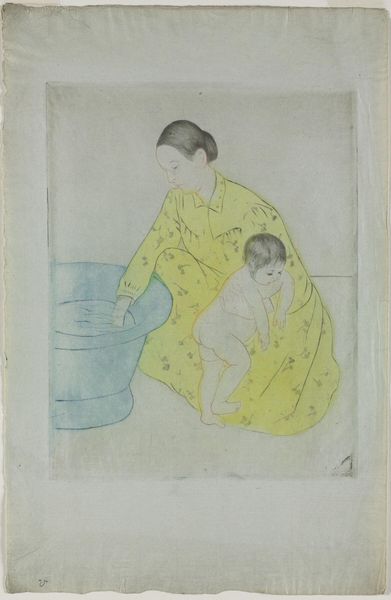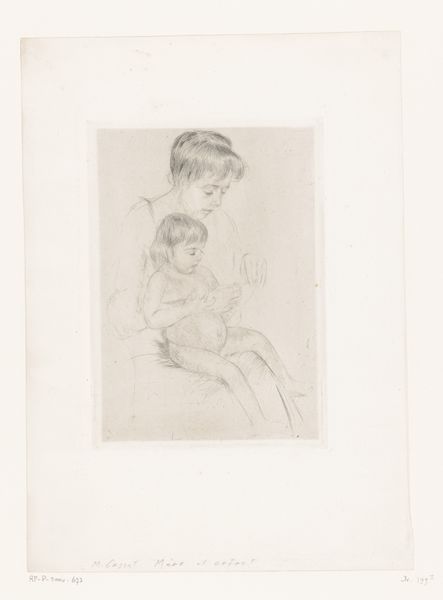
Dimensions: height 321 mm, width 248 mm
Copyright: Rijks Museum: Open Domain
Editor: This is Mary Cassatt's "Mother and Child by the Bath," created around 1891. It's a pencil drawing, quite delicate. I'm struck by the intimacy of the scene; there’s such a tenderness in the way the mother holds the child. What social context was Cassatt responding to or trying to promote with these images of women in domestic settings? Curator: It’s interesting you pick up on that intimacy, and your question cuts to the heart of Cassatt's work. Think about the late 19th century and the rigid societal expectations placed on women. Cassatt, as a woman artist herself, uses these domestic scenes, spaces deemed "appropriate" for women, to explore themes of female experience, motherhood, and the mother-child bond with a distinctly female gaze. The male Impressionists largely ignored these interior worlds, didn't they? Editor: That's a good point. They really did! I guess I'm curious whether the focus on motherhood perhaps inadvertently reinforces those societal limitations even as it seeks to depict the truth of women’s lives. Was Cassatt really pushing boundaries, or was she in some ways accepting them? Curator: That's a crucial and valid point to raise, isn't it? Viewing it through a contemporary lens, we can question whether such depictions of motherhood inadvertently perpetuate limiting roles. However, in Cassatt’s time, these everyday moments likely resonated as a quiet rebellion against idealized, often male-authored, representations of women. Her dedication to depicting women as active subjects within their own sphere offered a nuanced, feminist perspective. Does knowing this change how you see her work? Editor: Definitely. I’m thinking now about how depicting this ordinary, everyday experience normalizes it, grants it value and visibility. I see how it challenges the complete lack of representations of women artists at the time. Thanks, this was insightful. Curator: And for me, you have really drawn out the ambivalence that Cassatt's art produces, making us consider it in both historical and contemporary ways.
Comments
No comments
Be the first to comment and join the conversation on the ultimate creative platform.
